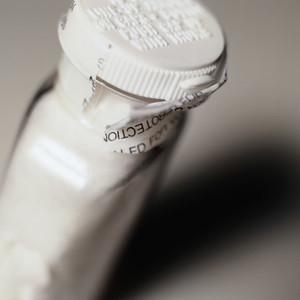Old, off-patent drugs are becoming increasingly expensive. But how can policymakers address the problem? Naren P Tallapragada from the Harvard Medical School discusses the underlying causes of the high-cost off-patent drug problem and proposes some policy solutions that could address the problem [1].
Policies to address price rises in old generics
Generics/Research
|
Posted 25/11/2016
 0
Post your comment
0
Post your comment

In August 2015, Turing Pharmaceuticals (Turing) increased the price of its newly acquired 62-year-old infectious disease drug Daraprim (pyrimethamine) from US$13.50 a tablet to US$750 – a 5,000% price hike [2]. According to Mr Tallapragada, ‘Turing had the power to set a high price for Daraprim because the drug’s limited patient population, the absence of competing manufacturers and a lack of therapeutic alternatives all created an effective monopoly’.
Mr Tallapragada points out that ‘similar forces have driven up the prices of other off-patent drugs that treat diseases as diverse as heart failure and multi-drug-resistant tuberculosis’. For example, Valeant Pharmaceuticals, in a single day, raised the price of two drugs, Nitropress (nitroprusside) – a vasodilator used to reduce blood pressure – and Isuprel (isoprenaline) – used for the treatment of bradycardia (slow heart rate), by 212% and 525%, respectively [3].
Expanded compounding, reference pricing and the FDA (US Food and Drug Administration) incentives are solutions that could, according to Mr Tallapragada, be used to address the problem high prices in off-patent drugs.
Expanded compounding
Compounding pharmacies prepare doctor-prescribed, patient-specific formulations of mixtures of drugs. In October 2015, Imprimis Pharmaceuticals (in conjunction with the payer Express Scripts) announced it would sell a Daraprim competitor for less than US$1 per tablet by combining pyrimethamine with a form of folic acid called leucovorin that reduces pyrimethamine’s adverse side effects. Imprimis can do this because many of the active pharmaceutical ingredients in off-patent drugs are available for compounders to purchase in bulk. Expanded compounding for small patient populations could therefore provide a solution to the monopoly problem.
The problem is that compounding pharmacies are limited in what they can provide as by statute, compounders may not produce ‘drug products that are essentially copies of a commercially available drug product’. In addition, ‘compounded drugs are not FDA-approved nor are their manufacturing processes necessarily FDA-regulated’. Therefore, ‘over-reliance on compounding may expose the public to very real risks of contamination and adulteration’. To address such issues, a compounder can seek certification as an ‘outsourcing facility’ from FDA.
Reference pricing
Reference pricing is a widespread method of calculating a country’s drug reimbursement rates as some function of: (i) that drug’s prices in several peer nations; and/or (ii) the average price of therapeutically comparable drugs in that country itself. Mr Tallapragada points out that ‘approach (ii) is actually very similar to how Medicaid computes Federal Upper Limits to reimbursement, so reference pricing could be practical in America’.
Reference pricing often lowers the price of drugs in the same therapeutic class by reducing the price to the cheapest drugs within the group [4]. Mr Tallapragada points to the example of Norway, where ‘use of cost-per-QALY (quality-adjusted life year) to pick one of many therapeutically comparable drugs has translated into major savings, like paying 71% less than Medicare for the same osteoporosis treatment’.
FDA incentives
Mr Tallapragada suggests that FDA could keep a list of single-source off-patent drugs, like it does for drugs in short supply. The agency could then offer incentives to generics makers who apply to produce these drugs, such as expedited processing of their applications and fee waivers. In this way market competition for the drug would be increased and prices should decrease. This, says Mr Tallapragada, could be carried out under the auspices of drug shortages, for which the agency already has a major role. This he qualifies with the statement that ‘access to a drug does decrease with substantial increases in price’, which could be considered a ‘shortage’.
Mr Tallapragada concludes that ‘policymaking clearly has a role to play to ensure that private profits do not come at unbearable costs to public health and the general welfare’.
Related articles
Generic injectable prices stay high even after shortages resolved
US politicians form Affordable Drug Pricing Task Force
References
1. Tallapragada NP. Off-patent drugs at brand-name prices: a puzzle for policymaker. J Law Biosci. 2016;3(1):238-47.
2. GaBI Online - Generics and Biosimilars Initiative. Senator calls for FTC to investigate drug makers for antitrust violations [www.gabionline.net]. Mol, Belgium: Pro Pharma Communications International; [cited 2016 Nov 25]. Available from: www.gabionline.net/Policies-Legislation/Senator-calls-for-FTC-to-investigate-drugmakers-for-antitrust-violations
3. GaBI Online - Generics and Biosimilars Initiative. US politicians form Affordable Drug Pricing Task Force [www.gabionline.net]. Mol, Belgium: Pro Pharma Communications International; [cited 2016 Nov 25]. Available from: www.gabionline.net/Generics/General/US-politicians-form-Affordable-Drug-Pricing-Task-Force
4. GaBI Online - Generics and Biosimilars Initiative. How successful is the reference pricing system in Belgium [www.gabionline.net]. Mol, Belgium: Pro Pharma Communications International; [cited 2016 Nov 25]. Available from: www.gabionline.net/Generics/Research/How-successful-is-the-reference-pricing-system-in-Belgium
Permission granted to reproduce for personal and non-commercial use only. All other reproduction, copy or reprinting of all or part of any ‘Content’ found on this website is strictly prohibited without the prior consent of the publisher. Contact the publisher to obtain permission before redistributing.
Copyright – Unless otherwise stated all contents of this website are © 2016 Pro Pharma Communications International. All Rights Reserved.
Most viewed articles
The best selling biotechnology drugs of 2008: the next biosimilars targets
Global biosimilars guideline development – EGA’s perspective
Related content
Japan’s drug shortage crisis: challenges and policy solutions
Saudi FDA drug approvals and GMP inspections: trend analysis
Generic medications in the Lebanese community: understanding and public perception
Community pharmacists’ understanding of generic and biosimilar drugs: Lebanon case study
Generic medications in the Lebanese community: understanding and public perception

Generics/Research Posted 23/01/2024
Community pharmacists’ understanding of generic and biosimilar drugs: Lebanon case study

Generics/Research Posted 08/09/2023
The best selling biotechnology drugs of 2008: the next biosimilars targets








Post your comment